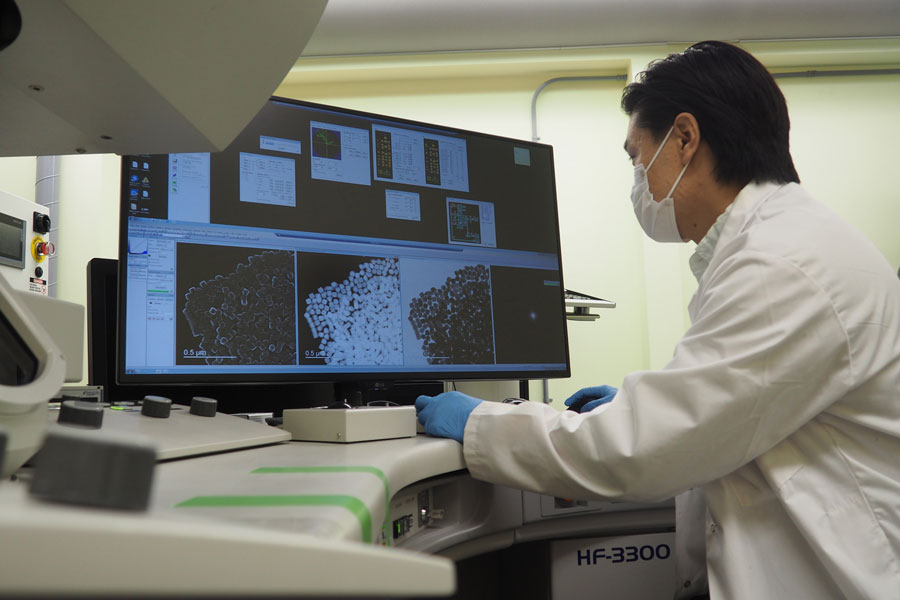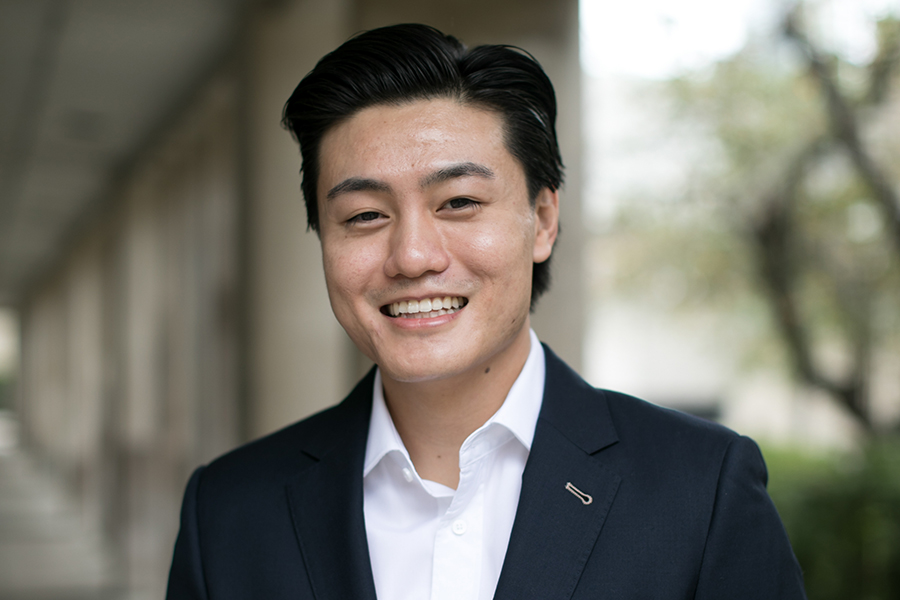Growing up in Texas, then later in Calgary, Paul Chen (ChemE PhD 2T2) wasn’t too sure what he wanted from his career — but he did know that he loved building.
“When I was little, this meant using Lego bricks, cards, cassette tapes and anything else I could get my hands on. My family still jokes that I discovered countless ways to make walking hazards,” he says.
“In engineering, I saw a way in which atoms and molecules could become my new building blocks. I wanted to build materials that could help people.”
Today, Chen assembles atoms of metals — such as gold, silver and palladium — into nanoparticles that could unlock new ways of diagnosing or treating disease. His leading-edge work has earned him a 2022 Schmidt Science Fellowship, an honour he shares with 28 other researchers from around the world.
Nanoparticles are tens of thousands of times smaller than the width of a human hair, and are used in technologies ranging from solar panels and video displays to drug delivery vehicles.
Since many properties of nanoparticles depend on their structure, Chen and his collaborators have investigated how nanoparticles are formed from atoms, their basic building blocks.
By harnessing these insights, Chen precisely synthesizes nanoparticles for use in biomedical applications. For example, the nanoparticles can be used to power new medical diagnostic techniques with the potential to be faster, more accurate or less costly than those used today.
The Schmidt Science Fellowship comes with a stipend of US $100,000 per year for up to two years, to be applied toward postdoctoral studies at an institution of the recipient’s choice.
“I feel tremendously fortunate to be a Schmidt Science Fellow,” he says. “This opportunity means that, at an early career stage and in a supportive environment, I have the intellectual freedom to pursue high-risk, interdisciplinary research ideas.”

Chen has already shown an ability to pivot quickly and collaborate with researchers outside his field. Though he began his PhD with a focus on the fundamental behaviour of the atoms that compose nanoparticles, the arrival of COVID-19 in Canada made him re-think his path.
“While I knew little about viruses or epidemiology in early 2020, I thought perhaps my skills could enable unique research that may not otherwise have been completed,” he says.
“My supervisor, Professor Frank Gu (ChemE, BME), supported me in pivoting my research and finding collaborators, including Professor David Fisman at U of T’s Dalla Lana School of Public Health and Professor Marion Koopmans at the Erasmus University Medical Center in the Netherlands.”
Combining approaches from engineering, virology and epidemiology, the team worked to better understand why superspreading drives the COVID-19 pandemic, given this wasn’t the case with the last pandemic, H1N1 flu in 2009. In addition, they studied the kinetics of the virus that causes COVID-19, known as SARS-CoV-2, in the respiratory tract.
“We also modelled the extent to which SARS-CoV-2 is expelled through droplets and aerosols, providing support for the role of aerosol transmission in COVID-19,” says Chen. “Our work has helped inform an understanding of how people get infections like COVID-19 and pointed toward potential ways to curb transmission.”
Chen says that what drew him to U of T was the density of researchers and the opportunities for collaboration — especially across disciplinary boundaries.
“U of T has engineers, chemists, biologists, physicists, epidemiologists, medical professionals, social scientists, humanities scholars, entrepreneurs and many others in close proximity,” he says. “I have come to learn that cross-disciplinary interactions in a community like ours facilitates creative, forward-looking science.”
“Paul is one of the most talented, capable and promising researchers that I had the privilege to work with in my career,” says Gu. “Each day, he commits to making himself a better researcher than the day before. He shares his vision through his innate drive, and he has a strong sense of his responsibility to build a better world through science.”
“Collaboration across disciplines is a cornerstone of our mission here at U of T Engineering,” says Dean Chris Yip. “Paul Chen’s journey — and this award — both underline why that kind of cross-pollination is so important, and how it drives understanding, innovation and progress. We’re so proud of Paul’s huge achievement — congratulations on behalf of the Faculty.”
While Chen has yet to decide where he wants to pursue the interdisciplinary research that the Schmidt Fellowship will enable, he’s grateful for the opportunity that it represents.
“I feel privileged to join a lifelong community of Fellows who are diverse in background and focus but alike in their passion to use science to help build a better world,” he says. “I would like to thank Professor Gu, my lab mates and our collaborators for a wonderful PhD experience. I feel lucky to have been on this journey with them.”




